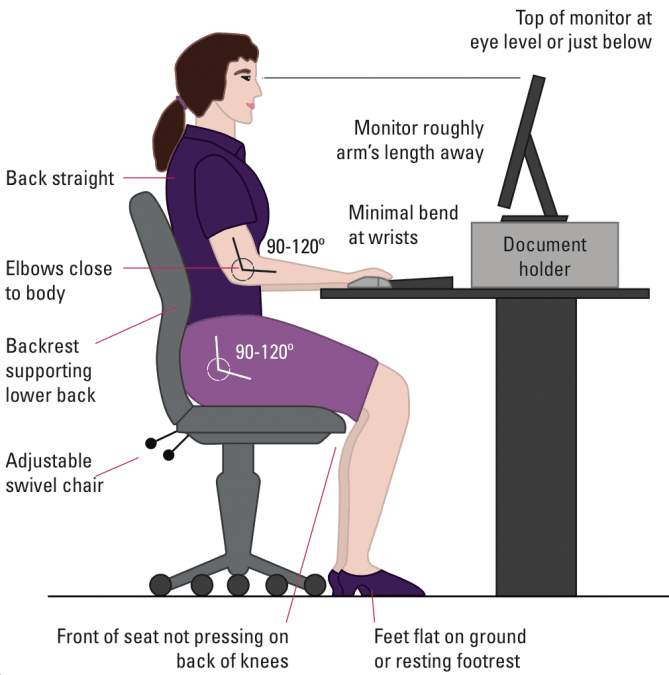

tingling sensations with a paralysing feeling.This can lead to a reduction in your symptoms but that might take a considerably long time.
#Health and safety using computers at work how to
In this phase you need help from a rehabilitation physician who teaches you how to deal with pain and other symptoms. This can have annoying consequences for your work. Then you can no longer work properly with your laptop or computer. A small number of employees eventually end up in this persistent phase. As nerve damage occurs then even light tasks such as lifting up a glass of water can become impossible. You have severe complaints and serious limitations in both your work and daily life.
tingling sensation in the fingers and arms. nagging and stabbing unbearable pain in the arm. You can only carry on working to a limited extent and you may experience symptoms during everyday activities such as cleaning your teeth, combing your hair, opening bottles or riding your bike. At this point you should be seriously concerned. The symptoms no longer disappear when you relax and you can also experience these during the night. Ask your health & safety coordinator for the contact details. You can make an appointment with the occupational physician without prior permission. 
If the aforesaid symptoms keep recurring then seek advice from the occupational physician or your general practitioner.
stiffness upon clenching and unclenching the hands. weakness in the hands or a lack of control. In the initial phase you experience symptoms that appear sometimes when you work with the computer and then disappear again when you stop. Unfortunately, the symptoms can sometimes develop surprisingly quickly! Phase 1: Initial phase However, depending on the stress (cause) and symptoms, the transition from one phase to the next does not necessarily have to be gradual. How do I recognise complaints or symptoms in myself?īroadly speaking, three phases can be distinguished. And that is why it is so important to devote considerable attention to this issue. Employees using computers run a significant risk of developing RSI. Please note that Occupational Health does not provide authorisation for the purchasing of computer health equipment.RSI (repetitive strain injury) is an umbrella term for a range of symptoms of the hand, wrist, elbow, shoulder or neck due to an inappropriate posture, repetitive movements or indeed the lack of movement (static posture). The role of the Computer Health Assessor is to ensure that your workstation is set up correctly and to give ergonomic advice on posture and equipment. If you do not know who your local assessor is, speak with your supervisor/manager or local department safety officer who should be able to guide you. If you have problems regarding your health related to computer use, please contact your local computer health assessor. Examples from a laboratory environment include using a microscope and pipetting. ULD’s can also be associated with other work activities or workstations. These problems can be avoided by following good practice. 
These aches and pains are sometimes called upper limb disorders (ULDs) or repetitive strain injuries (RSI). Computer workstations or equipment can be associated with neck, shoulder, back and arm pains. The role of the Occupational Health Service is to provide help and advice to members of staff who are experiencing detrimental health effects when using their computer equipment.







 0 kommentar(er)
0 kommentar(er)
